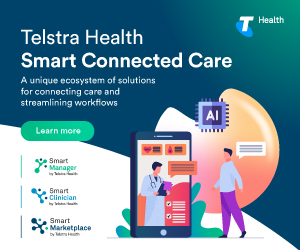5 Digital healthcare predictions for 2018
The age of digital healthcare is here, and artificial intelligence, robotics and cloud-based SaaS platforms are increasingly becoming part of the industry’s lexicon.
Now that patients are becoming more comfortable with using digital networks and services and expecting a more proactive, personalised and efficient management of their patient journey, the time has come for healthcare providers to become more proactive and innovative in enabling ideal healthcare.
With innovation in mind and the end of 2017 fast approaching, we take a look to find out what 2018 holds for digital healthcare.
1. AI-enabled healthcare ecosystem
While Australian providers have been relatively slow to adopt cognitive and AI technologies, 2018 will see further collaboration between humans and machine in the healthcare space.
Predicted to have a more tangible impact in the healthcare ecosystem over the next five years, the work of AI will begin to see fruition, particularly in the diagnostic imaging market, and we will see clinicians starting to embrace this technology and use it more widely.
Meanwhile the age of robotics will continue to become more pervasive, as hospitals and healthcare providers start to embrace more automated processes for clinical applications and processes.
2. Internet of medical things (IoMT)
Recent figures released by Health Data Management revealed IoT-enabled asset tracking an inventory management in hospitals are set to double over the next two years globally.
At the same time, aggregation and integration of data thought IoT platforms will offer further opportunities to drive efficiencies within hospital operations, including reducing operational costs and enabling better human resource management.
In 2018, we will continue to see the development of IoT-enabled medical devices along with augmented and virtual reality, which will underpin a new generation of faster, more personalised healthcare.
3. Switching to cloud-based software
Certainly, one of the biggest divers of digital transformation for healthcare in 2017 has been secure migration and operation of clinical practice management on the cloud.
In 2018, cloud-based SaaS platforms will be integral to any healthcare digital transformation model. The uptake of these technologies will drive efficiencies and opportunities for growth, with data security remaining as a top priority.
At the same time, cloud-based platforms will enable more empowered use of data, with technology enabling practitioners to better collect, manage, analyse and share relevant data within the healthcare ecosystem.
4. Blockchain and healthcare
Healthcare is currently in the early stages of exploring the use and potential of blockchain to improve clinical processes.
In 2018, blockchain technology will move from media hype to a core reality for healthcare management with the debate moving onto how the technology will really impact the operations management, patient identity and record management.
Already, the Garvan Institute announced it is investigating whether blockchain technology can be used to help citizens get more control over their health data.
The investigation follows recognition that the Australian healthcare system is currently underestimating the speed at which such new technologies will impact precision medicine, placing increased pressure from patients to demand more control over their own health data.
5. Digital mobile engagement
Mobile is becoming ubiquitous in the healthcare industry, playing a significant role as the industry continues to adopt a more patient-centric approach. Recent figures released by Health Data Management revealed digital mobile engagement among life science companies, patients and providers would have increased by 50 per cent by 2019.
With the increased uptake of mobile engagement in healthcare, 2018 will see more flexible, efficient and open communications between practitioner and patient, while remote and offsite work will continue to become prolific.
At the same time, patients will continue to expect more simple, user-friendly tools from their healthcare providers, and more efficient ways of managing their patient journey. This will place further pressure on healthcare leaders to be more proactive and leveage more effective ways to improve patient experience, while meeting the changing expectations of the next generation of digital and mobile-savvy patients.









